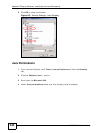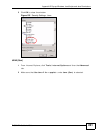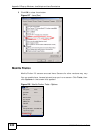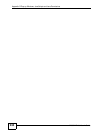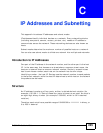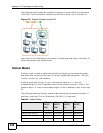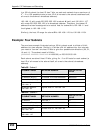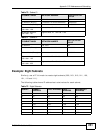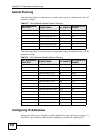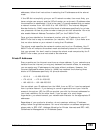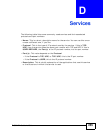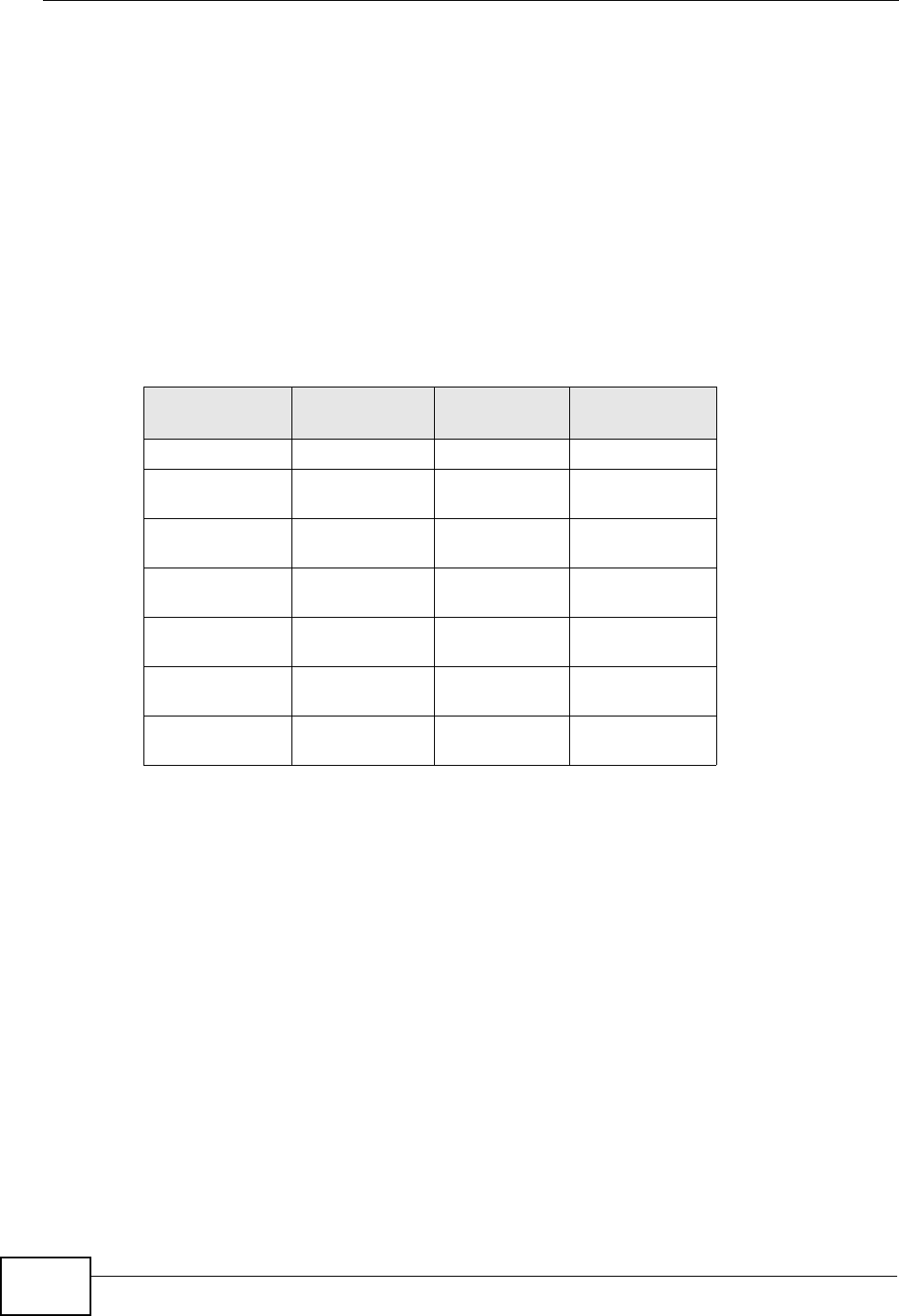
Appendix C IP Addresses and Subnetting
P-660H-T1v3s User’s Guide
248
Notation
Since the mask is always a continuous number of ones beginning from the left,
followed by a continuous number of zeros for the remainder of the 32 bit mask,
you can simply specify the number of ones instead of writing the value of each
octet. This is usually specified by writing a “/” followed by the number of bits in
the mask after the address.
For example, 192.1.1.0 /25 is equivalent to saying 192.1.1.0 with subnet mask
255.255.255.128.
The following table shows some possible subnet masks using both notations.
Subnetting
You can use subnetting to divide one network into multiple sub-networks. In the
following example a network administrator creates two sub-networks to isolate a
group of servers from the rest of the company network for security reasons.
In this example, the company network address is 192.168.1.0. The first three
octets of the address (192.168.1) are the network number, and the remaining
octet is the host ID, allowing a maximum of 2
8
– 2 or 254 possible hosts.
Table 67 Alternative Subnet Mask Notation
SUBNET
MASK
ALTERNATIVE
NOTATION
LAST OCTET
(BINARY)
LAST OCTET
(DECIMAL)
255.255.255.0 /24 0000 0000 0
255.255.255.12
8
/25 1000 0000 128
255.255.255.19
2
/26 1100 0000 192
255.255.255.22
4
/27 1110 0000 224
255.255.255.24
0
/28 1111 0000 240
255.255.255.24
8
/29 1111 1000 248
255.255.255.25
2
/30 1111 1100 252



